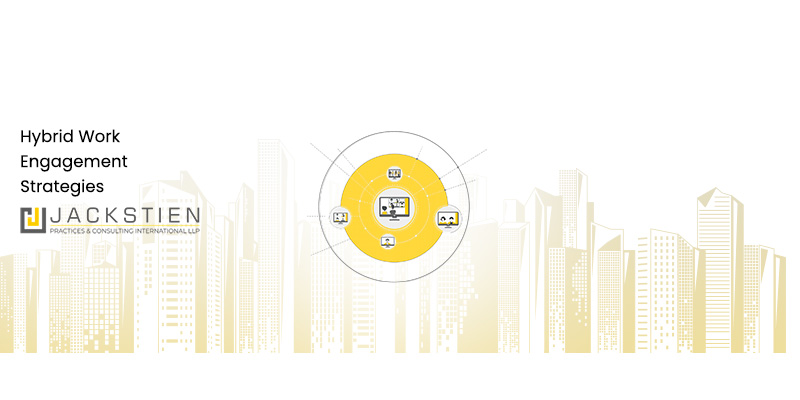As hybrid work’s benefits and risks continue to reveal themselves, it is imperative to identify, understand and deal with the contradictions that may come in the way of risk managing a successful hybrid working strategy. These four contradictions (the four horsemen) are explained in an article by Nishant Shah, Managing Partner, Jackstien Practices in an article carried by the Indian Achievers Forum (link to original article https://www.iafindia.com/risk-managing-hybrid-work-the-contradictions/ replicated below).
<<quote>>
The four horsemen of the apocalypse are four biblical figures from the Book of Revelation. Each represents a different facet, but suffice it to say that none are pleasant news.
A well-designed Hybrid Work framework is not just a benefit for employees. It is a necessity for the organization as a whole, almost a productive asset in its own right.
But there are four key contradictions that need to be understood and dealt with. Unless resolved, these four contradictions are like the four biblical horsemen – harbingers of bad times.
1.Uniqueness Beats Consensus
While more and more benefits of Hybrid Work become apparent every day, more ‘known-unknowns’ crop up too, without a consensus on how to approach them.
The root of the issue lies with expect a consensus in the first place. A consensus on approach implies that one must ignore the uniqueness of each business, structure and ‘winning-edge’. This is inherently contradictory; all good businesses only become great businesses because of their uniqueness. Attempting to side-line these strategic advantages in favour of cookie-cutter, off-the-shelf solutions is obviously counter-intuitive. Hybrid Work structures must be customized and risk managed specifically for each business and department.
2.Cohesive Thinking Trumps Fractured DIY
Some view Hybrid Work as a Human Resources issue for the CHRO to manage, some consider it a Financial Issue for the CFO to look at, some a Technology issue for the CTO to design while others consider it an Administrative issue or a Facilities issue simply because it affects usage of real estate.
Rather than any one single aspect, Hybrid work impacts every aspect of an organization including all of the above. Requiring the creation of a Hybrid Work framework from any single department is contradictory.
Risk managing Hybrid Work requires financial, technical, technological and behavioral expertise. It is therefore a specialised skill requiring 360-degree solutioning that must necessarily enhances each piece of the solution rather than treating each as piece-meal aspects.
Attempting a 360-degree solutioning with a Do It Yourself (DIY) mindset using whatever skills are available across departments is inherently problematic; the departmental structure is after allset-up to look at certain specific areas only by design rather than for 360-degree solutioning.
CEOs and COOs are typically the only positions with the remit to look across departments. Unfortunately, with so much on the plate, the larger approach for Hybrid Work tends to get delegated to one department or the other, resulting in broken solutions that create multiple risks that exacerbate each other.
Worse, while specialised skills are essential, they are also very rare. That is why organizations sometimes default to consulting firms whose skills are focussed only on the financial aspects, with the technical, technological and behavioural aspects falling by the wayside.
3.Questions Before Answers
The right answers are critical but cannot exist without asking the right answers.
History shows that getting the right answers to the wrong questions is often the single biggest risk one faces, because the resulting actions are inherently contradictory to the primary objective.
Only once the right primary questions are answered can we move on to secondary questions. Like say, the model to be adopted. Take for example these considerations at each departmental level;
- What will hybrid look like for the department?… Will it mean some employees in some departments working remotely full-time while others work on-premises full-time? Maybe some can work a part of the day from office while the rest work remotely? Maybe each employee can work certain days on-premises and other days remotely?
- Crucially, who will do what, how and from where? On what days and at which intervals time? What are the dependencies and risks in each case? What about others that work with them directly or indirectly? Are the answers scientifically justifiable or simple personal gut-feel?
- How do you deal with fairness, consistency, policy matters, exception and productivity management? To what extent and in what circumstances can you accommodate individual preferences?
- How does one get consensus and put in place a governance framework, policy, controls and codes to manage all variables?
Only once the right questions are settled with the right expertise, can existing departments step in to operationalize the framework.
4.The Three-Two
The unfortunate reality is that instead of the Right Way, cookie-cutter solutions (like two or three days a week etc.) often land up being adopted. These almost always break down when facing the practical daily reality of business challenges and priorities.
But let’s face it, breakdown of the system of three-two days a week on or off premises is inevitable.
Lets consider why the three-two system is arbitrary; it consists of going on-premises two or three business days, sometimes per personal preference or with little notice leading to over-utilization of under-utilization other than by sheer luck.
Further these two/three days recur every five working days in a week which itself consists of seven calendar days; however, the actual calendar in question here is a sub-set that is itself broken into twelve sections (months), with each section ranging between twenty-eight to thirty-one days. Almost all critical dates and timelines that impact the business are based on the latter sectioning of the calendar and has little or no bearing or linkage to a ‘week’.
Linkages to a ‘week’ were ideal when the only decision was “when should we all collectively rest for a bit”. For decisioning on premise days for Hybrid Work, it holds little to no meaning and personifies trying to fit a proverbial square peg into a round hole.
The three-two system is adopted not because it is right but because (1) it is easy and (2) the expertise to do it the Right Way doesn’t exist.
That is precisely the reason we at Jackstien Practices have poured tremendous investments in research and development through our PRO.fusion consulting program for Hybrid Work. PRO.fusion helps organizations risk manage and evolve a Hybrid Work framework the Right Way; Profitably, Productively and Sustainably.
<<unquote>>


